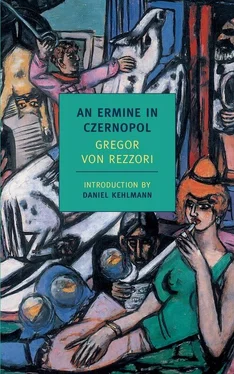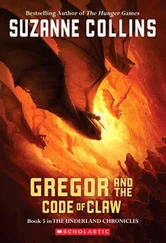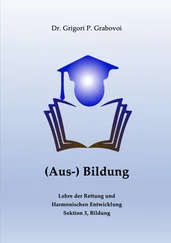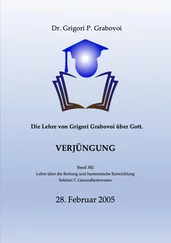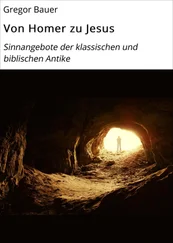The swarming ranks industriously and dutifully trickling onward called to mind a millipede or a column of termites. A teeming mass fused into a single organism, so that if you removed an individual you would find him tied and bound with multiple strings and bulging straps, in places roughly armored — we had been told that most of their equipment was made of paper and cardboard — or webbed together in a felt cocoon. Mess kits jutted out of the taut bulges of blankets, tents, and coats rolled and wrapped around their knapsacks, forming bumpy shields on their backs, while the stumpy cartridge pouches dangling in front of their soft bodies like rudimentary prolegs further enhanced the image. All their gear — rifles, bayonets, wire cutters, spades, satchels, canteens — was either tied down or stuck inside cases and sleeves, and as such became prickly or sagging outgrowths of the integument. The segmented rings of wound leggings bulged over huge hobnailed boots: serrated grips on the busily creeping claws. The spiked helmets had cloth coverings that made them merge with the head into something that seemed even bigger, the spike lending no more than a nascent sense of form, an embryonic physiognomy. We knew that the poor Germans had evolved to this stage in order to be brought into action , as the expression went, and we asked ourselves if the miraculous butterfly would emerge in the fiery, starlike blooms of bursting grenades and the fountains of glowing shots — so that in some sense they were larval fireworks, each equipped with a life of its own, firecrackers accoutered with movement and will.
We had no other way of explaining why they were so extraordinarily dangerous, and the images we saw of particularly effective units only substantiated our belief: shock troops — or, rather, what was left of them — whose heroism consisted in conquering or reconquering a section of trench, or retaking an elevation or a spectral bit of forest that was nothing more than a numbered grid on a map, in a war that had stretched across the continent, stiffening into a motionless dragon whose teeth were sunk into its own coiled tail. Not only was the landscape where this had happened pitted and perforated as if by a plague of gigantic caterpillars; there was no stem left standing, not even enough earth intact where one might sprout; barren earth yawned out of the craters of a lunar landscape; what had once been a tree lay uprooted across muddy puddles, or else its stump rose into the dead sky — defoliated, torn to shreds and shorn of bark, a withered ghost. Bits of flesh stuck on the barbed-wire thorns bore witness to the greed with which the devouring plague had fallen on the land. And as though this radical feeding had finally stilled their hunger, they now seemed close to the longed-for release from their larval state. They were in the process of breaking out of their confining husks. Their field tunics had burst open across their chest, revealing other protective membranes: shirts, undergarments, flannel warmers in the earthy colors of their reptilian existence. Their leggings had come apart, and what had once been tight and bulging now shook loose and fluttered, hollow and empty, in a universal process of peeling and flaking off.
Meanwhile, they were straining under so much military equipment that we had difficulty imagining how it could all possibly be used at one time: we figured it could only get in the way during a surprise attack. Nevertheless the long snakes of the machine guns’ cartridge belts draped over their necks, the ammo pouches and the massive pistol holsters on their hips, the clusters of hand grenades in front of their bodies seemed like viscera turned inside out, entrails expelled during their metamorphosis. Everything about it was highly volatile, just a moment away from exploding: all these pouches and pockets and cases, seedpods that would soon flower into flame.
We were particularly taken by the young noncommissioned officers: slight, gangly figures so completely bloodless they might have sprung from the soil of the trenches and crater-fields instead of a mother. Their boyish faces seemed permeated with the dematerialized glow of quintessential, dreamlike obsession. Peering out from under the shading brim of their hugely oversized steel helmets, with buckled chinstraps, they stared in our direction through white, ship stoker’s eyes, emaciated by unimaginable privations and filled with an ashy ecstasy, as if the white-glowing lava of horror had entered the landscape of a human face. But because we had been assured that they wrote the most beautiful poems, or at least carried the same with them in little volumes — because they fought to purify the soul more than merely to win the war — and hence their rather certain death was not only a casualty of enemy fire but a sanctified sacrifice on the altar of the highest human values , we felt obliged to somehow square this spirit with the horror. And while we agonized over these terrible impressions and tried to discover what about this spirit was so terrible it would lead men to literally ignite themselves like gigantic fireworks, our inability to understand formed a secret repulsion that combined with guilt over our own inadequacy to create a mixed emotion of respectful awe and absolute horror.
When we compared these young Germans to our own soldiers — and also to our enemies — who were really nothing more than simple soldiers, flushed peasant boys or nondescript faces in a disguise that they wore not without a degree of smugness along with the crude but understandable satisfaction that rowdiness had been made legitimate — we realized the distance that separated our German allies from the other warriors. But that only made the secret of their otherness more enigmatic than ever.
Herr Tarangolian, whom we once asked for an explanation of the German military prowess, offered the view that an attack wave of so many dumb faces had to render their enemies equally dumb. He then tried to placate us by noting that this martial superiority did not ultimately lead to the desired success that it had so reliably promised at the start — which was for us neither a comfort nor an explanation. What was truly horrifying about the exploding termite-men could not be dispelled with a joke, no matter how much it reflected the horror, and the fact that they were only bested by tremendous sacrifice and ultimately through starvation only further convinced us that the Germans were not people like everybody else.
We were particularly persuaded by the pictures of those great Germans who were said to personify the military genius of our brother nation. These stubble-headed commanders, so exaggerated, in a closefisted way, bending over maps at the general staff headquarters or surveying the death-ridden terrain through field glasses from a protected shelter, instead of riding into battle at the head of their troops, leading the colors, had so little in common with our naïve concept of heroism that it took elaborate explanations before we were prepared to understand what was truly admirable about their achievement. But the insect-like machine of the German troops did make enough of an impression on us that we began to have a vague sense of what we were supposed to understand: that this war to purify the soul combined the highly concrete use of force with the highly abstract use of steering, planning, and projection. And if our perception struggled against the idea of giving the planners priority over the actual fighters — who although they may have rated little more than cannon fodder at least had the stigmata of the sacrificial death in their favor — we nevertheless viewed the German generals with different eyes from then on.
In other words: it was they who would change our perception of war as beautiful .
I’m not saying that we had thought of war to that point with the aesthetic sensibilities of a battlefield painter. We had been born into the war and to some extent were spawned by it; it was in our nerves, our nature, our blood. It lay in the world that surrounded us, a world distressed and distorted, not yet fully revived following the tumult of annihilation, a world that had been blinded and now had to grope its way back onto its old course, its former trajectory, which had been lost, broken, interrupted for a deafening period and now had to be rediscovered like a drunk finds his way back home after a night of excess. But these old paths still contained the same old ruts, the same insanity: lurking in plans for new life was a lust for new power, new hopes were laced with greed, the newborn generation stilled itself with the essence of the old sin, and the buildings that grew out of the rubble already housed their own ruins.
Читать дальше
